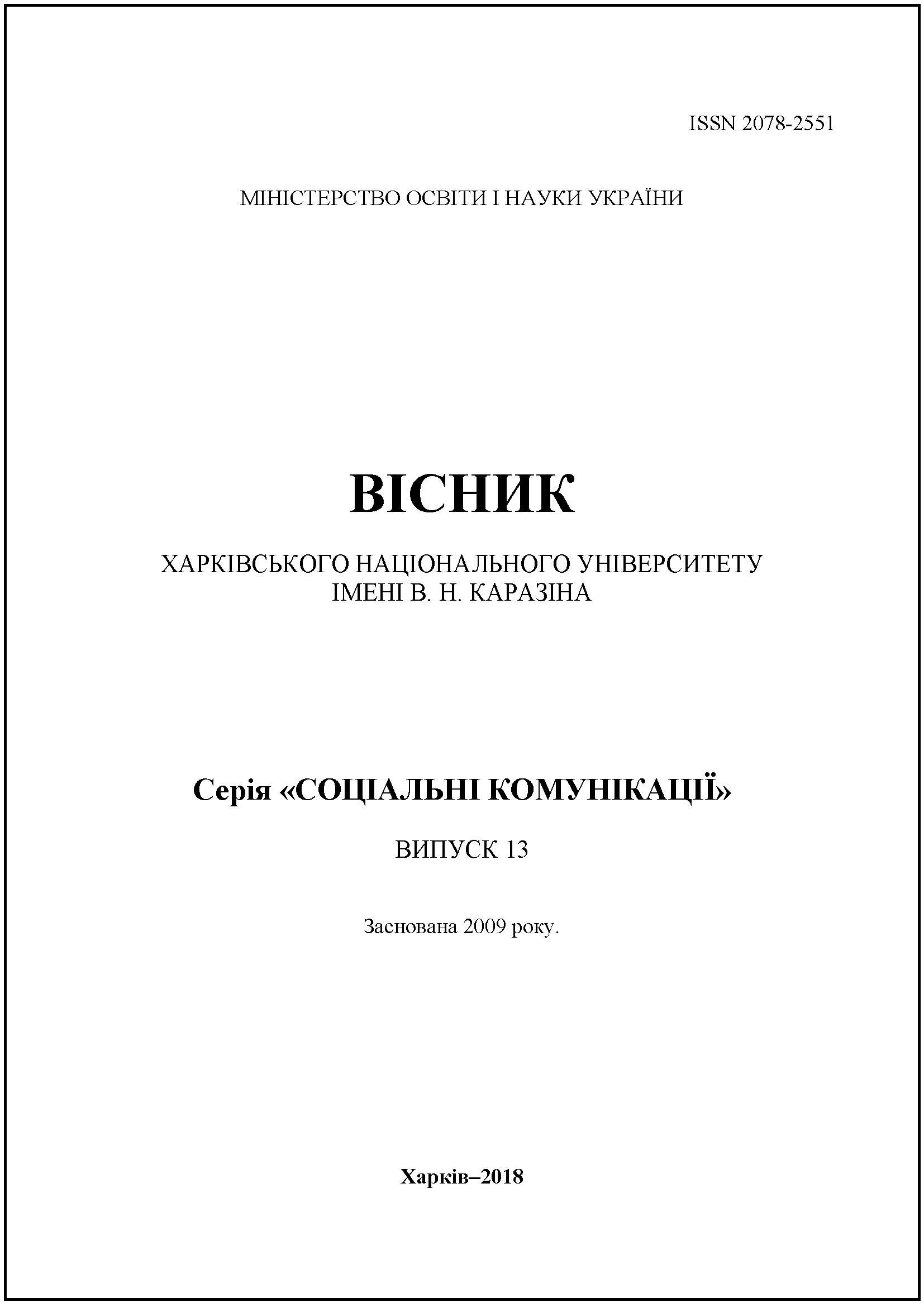The implementation of the informational function of the comic book on the example of «Crossroads. Nine stories of war and violence»
Abstract
The paper is devoted to the analysis of the іnformational function of the comic book. Taking as an example the comic book "Crossroads. Nine stories about war and violence", we demonstrate how information can prevail over entertainment in the comic book format; we analyze the techniques used by the authors to achieve a significant emotional effect, while maintaining documentary. We analyze the content of the comic book, its compositional features and extrapolate the features of journalistic scientific knowledge into the comic book research as a documentary-fiction text. In addition, based on the results of our research, we study the features that allow comics to be named a special media, with its own characteristics and the functions caused by them. The key point for our study is that the comics is a means by which the mass audience receives new information, that is, it performs communication and information functions. "Crossroads. Nine Stories of War and Violence " implements the informational functions of the comic book. The authors of the comic book submit recipient documentary information, using the compositional features of the genre. The comic books like "Crossroads. The Nine Stories of War and Violence" do not just fulfill the informational function, reporting what has happened. They actualize the theme, let it not to get lost in the information flow. And the artistic value achieved through the skill of the authors and the techniques they use helps to capture a fragment of history, which is mentioned in the narrative.
Downloads
References
Гуменюк Л. Визуальная поэзия: художник Марк-Антуан Матье и эксперт Михаил Хачатуров о комиксах [Электронный ресурс] / Людмила Гуменюк // Теории и практика. – Режим доступа: http://theoryandpractice.ru/posts/8113-comicsm.
Керлот, Х. Э. Словарь символов : [Мифология. Магия. Психоанализ : Перевод] / Х. Э. Керлот. – М. : REFL-book, 1994. – 556 с.
Макклауд С. Переосмысление комикса / С. Макклауд; пер. В. Кистяковский – М. : Белое яблоко, 2018. – 252 с.
Маклюэн Г. М. Понимание Медиа / пер. с англ. В. Николаева ; закл. ст. М. Вавилова. – М. ; Жуковский : КАНОН-пресс-Ц, Кучково поле, 2003. – 464 с.
Перехресття: девять історій про війну та насильство / І. Гансен [та ін.] ; худож.-оформ. С. В. Захаров, С. Ю. Рунова. – К. : Східноукраїнський центр громадських ініціатив, Лібереко – Партнерство за прав людини, 2017. – 124 с.
Статкус Е. Ученый Ник Соусанис: «Комиксы – естественный способ формулировать наши мысли» [Электронный ресурс] / Екатерина Статкус // Теории и практики. – Режим доступа: http://theoryandpractice.ru/posts/5580-uchenyy-nik-sousanis-komiksy--estestvennyy-sposob-formulirovat-nashi-mysli.
The Economist. The power of comics journalism [Еlectronic resource] / The Economist, 2016. – Resource аccess mode: https://www.economist.com/prospero/2016/10/21/the-power-of-comics-journalism.




